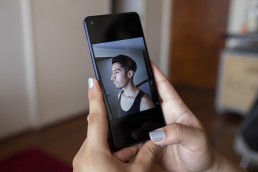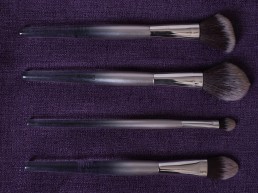About
Pedagogies
Although gender identity is very personal, we also know that in each sociocultural context, there are gender norms that define acceptable and marginalized forms of masculinity and femininity.
Gender ideals change little by little, as society changes, and often almost imperceptibly. However, these changes always occur within the binary gender matrix, maintaining a continuous difference between men and women that changes in form but not in function.
The invisibility of the binary gender matrix for cisgender people allows many of them to understand their gender as innate. Since their gender expression coincides with the expectations of the gender that was assigned to them at birth, pedagogies of “how to be a lady” or “how to be a gentleman” go unnoticed.
Unlike cis people, people with gender expressions that do not fit normative gender expectations —such as trans and non-binary identities— do not benefit from this passive pedagogy of gender, and so they tend to look for references in their environment and therefore internet to help them define and explore their identity.
Cata:
Well, at first I said no, “I think I'm a travesti.” And then I came across the term gender fluid and I said “no, maybe that's my label,” what I called it back then, because I said “damn, I feel super comfortable when I'm a woman.” But also out of fear, I unconsciously told myself, “No, I don't think I would live my whole life as a woman. There are many ‘man things’ that I like.” And what happened? Trans camp, which was a really beautiful initiative organized by a Facebook group of trans men, who extended the invitation to trans women.
Though representing the body digitally is often fraught, many trans peoples’ use of social media is intimately linked to their physical bodies. Rather than reducing the body to a mere abstraction, many trans people use the audiovisual and textual specificities of social media to express embodied identities, including corporeal changes like cellulite, scars, and surgical drains.
The combination of this content with the immediacy of social media creates a feeling of experiencing each step of the author’s transition alongside them. These transition videos are one of the most popular and archetypal forms of trans social media activity.

Luka:
Thanks to Twitter, I found out that there were other trans men...Suddenly there was a trans boy who appeared there. And I said "oh, this exists." And I started to discover more trans guys and the hashtag #transguytwitter and I got in and started to see photos. I started to see the transitions, and I cried. I cried with happiness. I was crying with hope, and I said, “this is me.”
Marcia:
I've always liked designing clothes, and well, I've been drawing since I was little. So my mom, she saw that all my brothers were playing football with the men outside and I was inside, drawing little girl's dresses and things like that. And she hated that. She wanted me to go play ball. She forced me to be macho.
Trans content online constitutes, both intentionally and often inadvertently, a kind of guide, one that has ramifications for the physical body and its relationship to the self, as they shape viewers’ imaginaries of possibilities for their own embodied trans identities.















